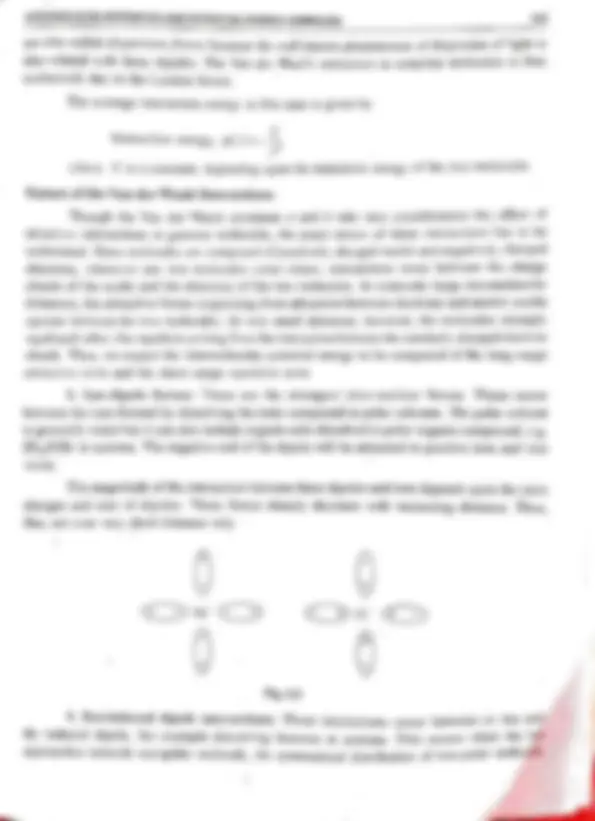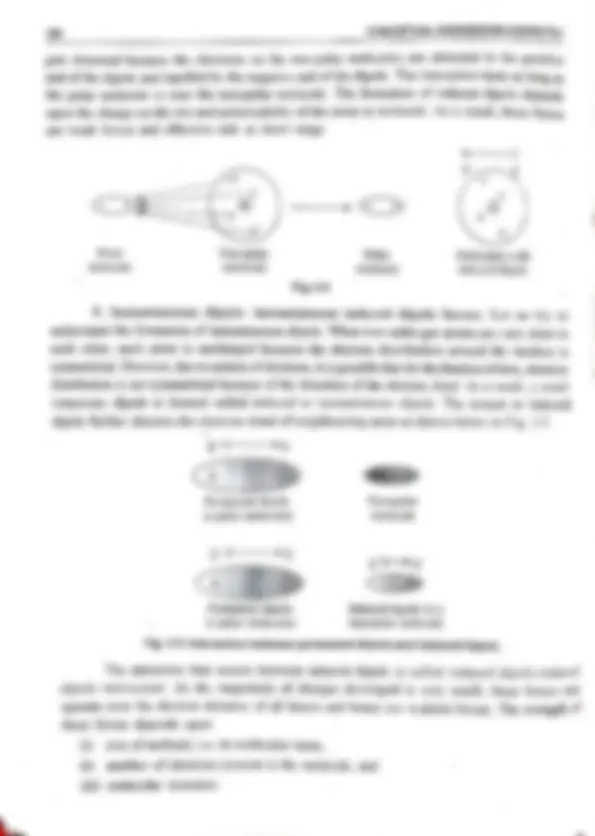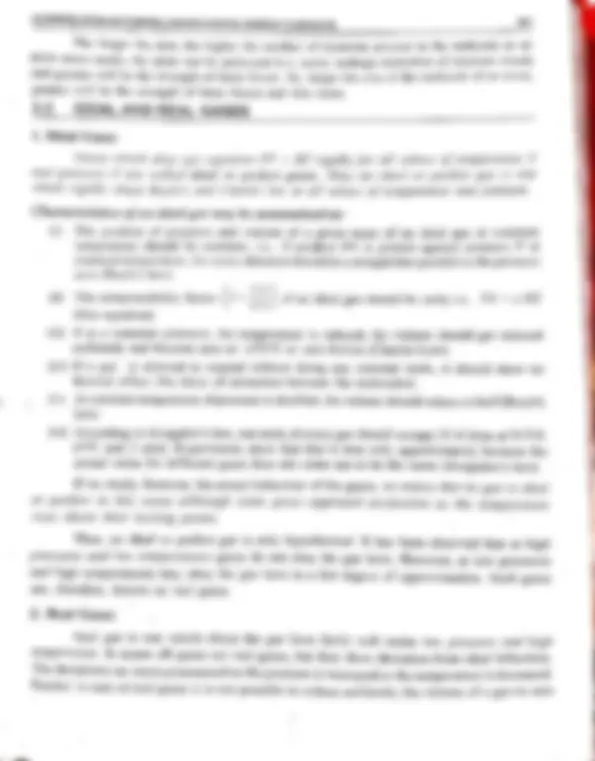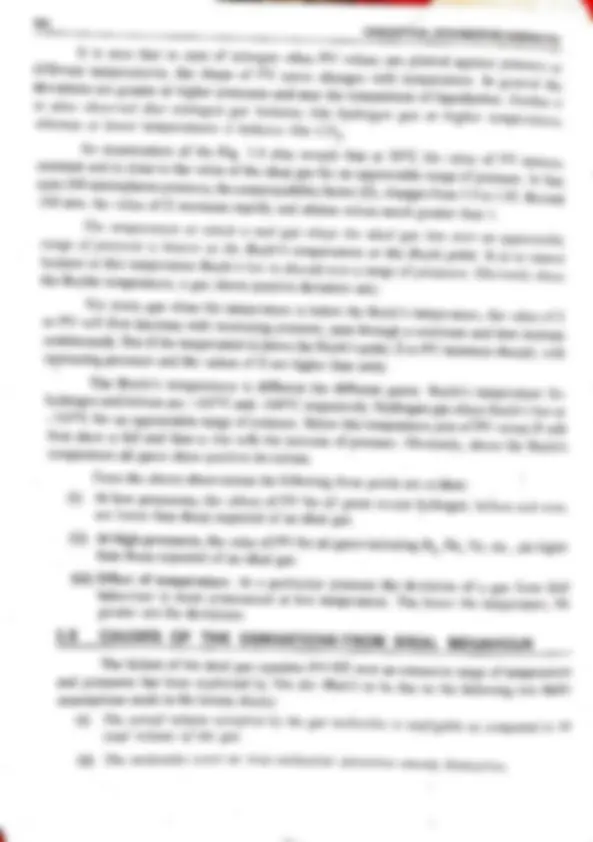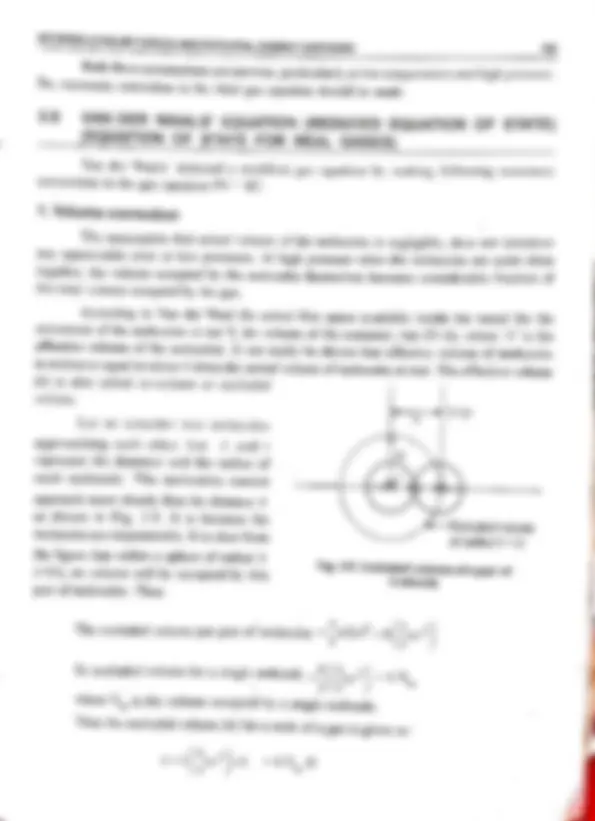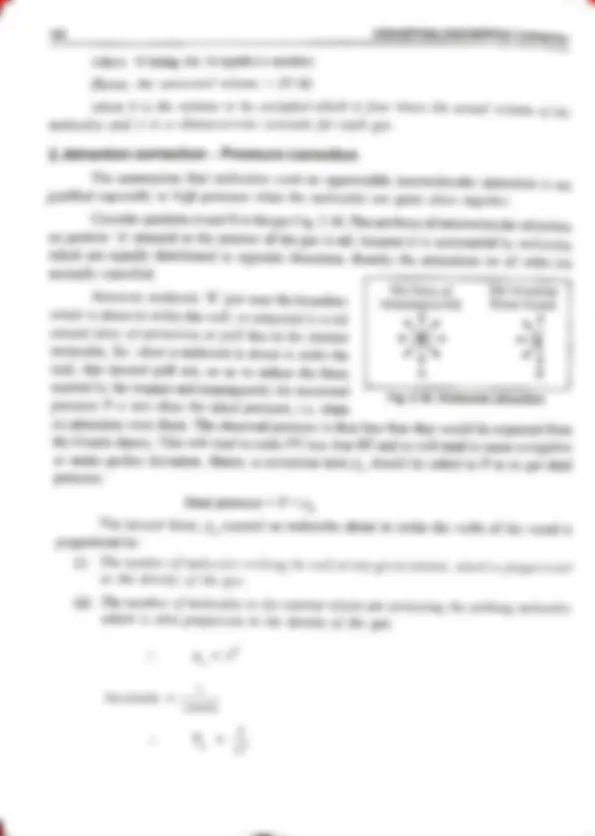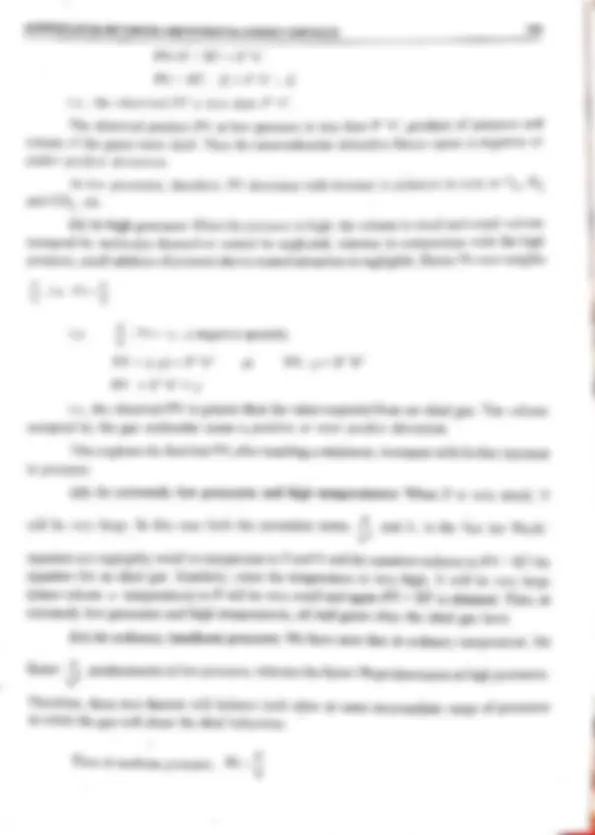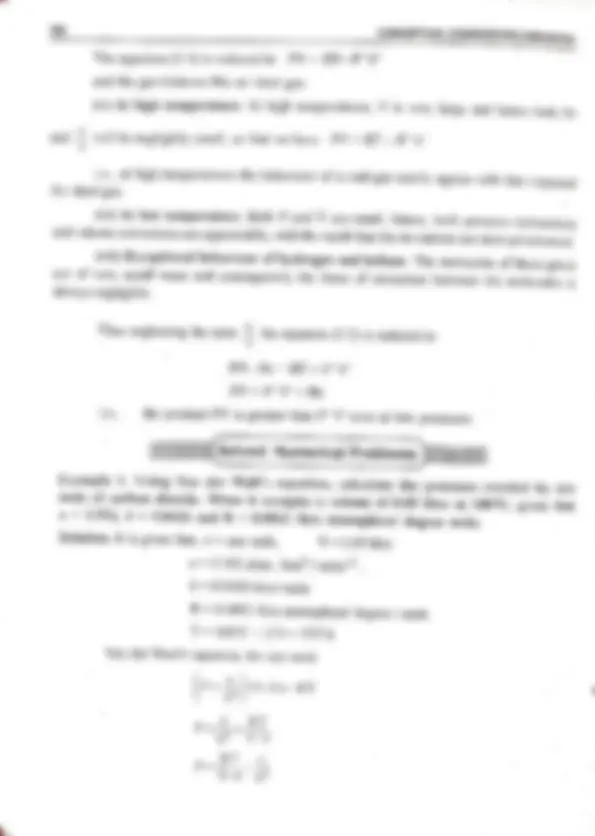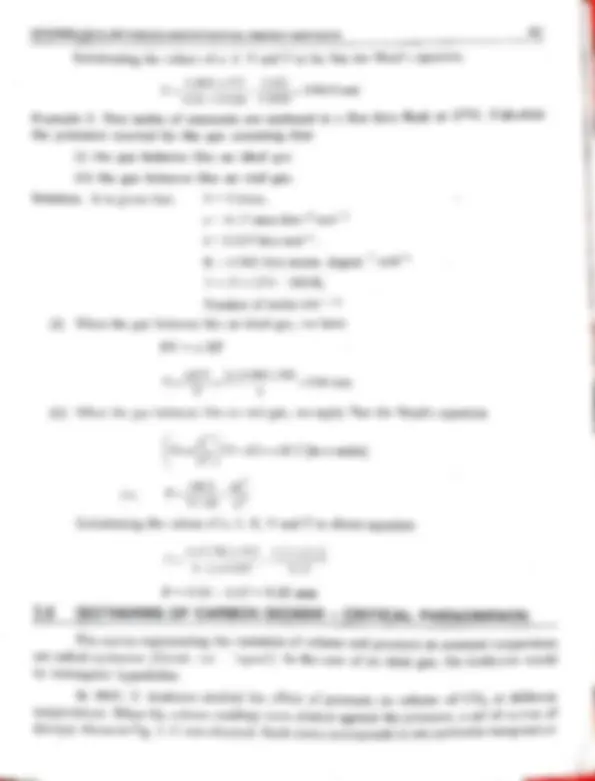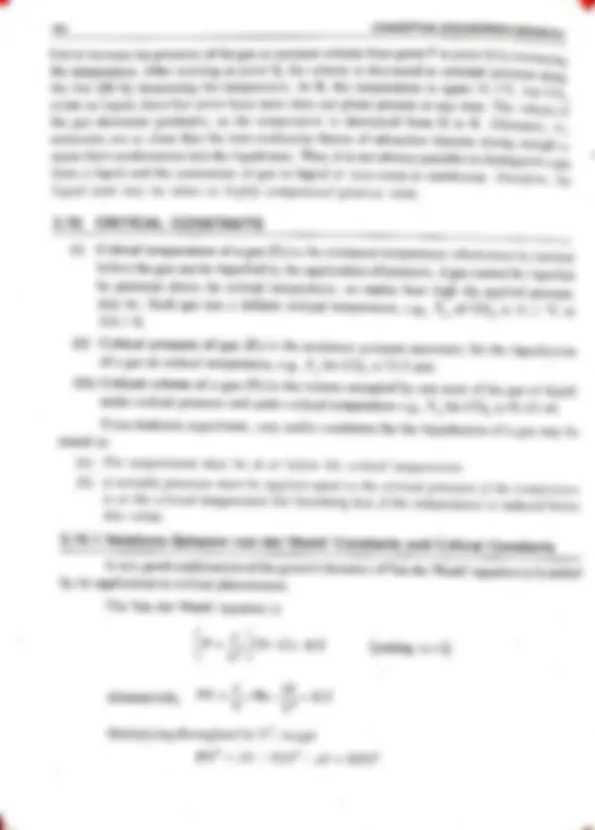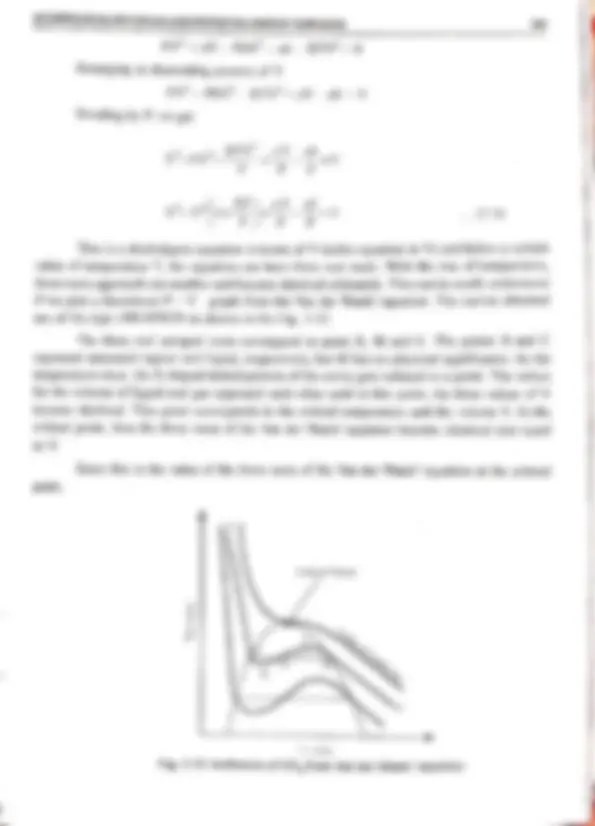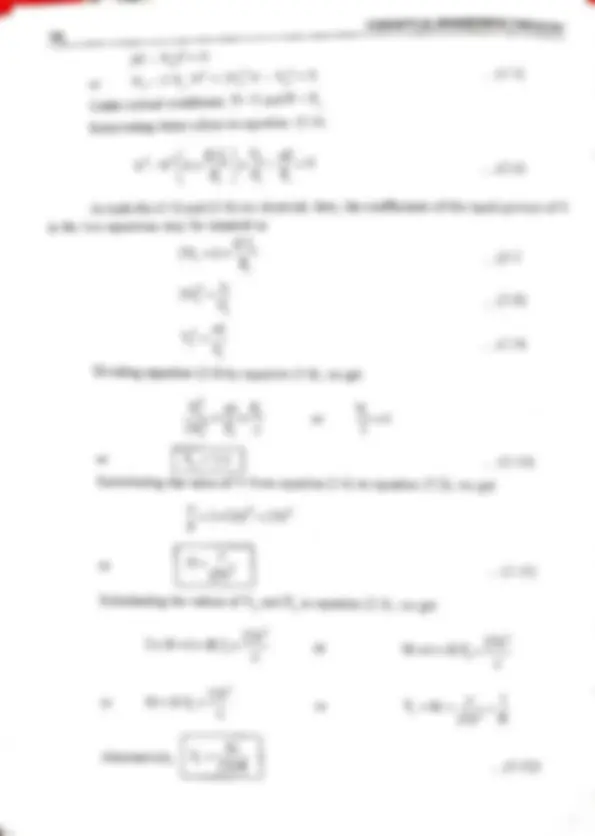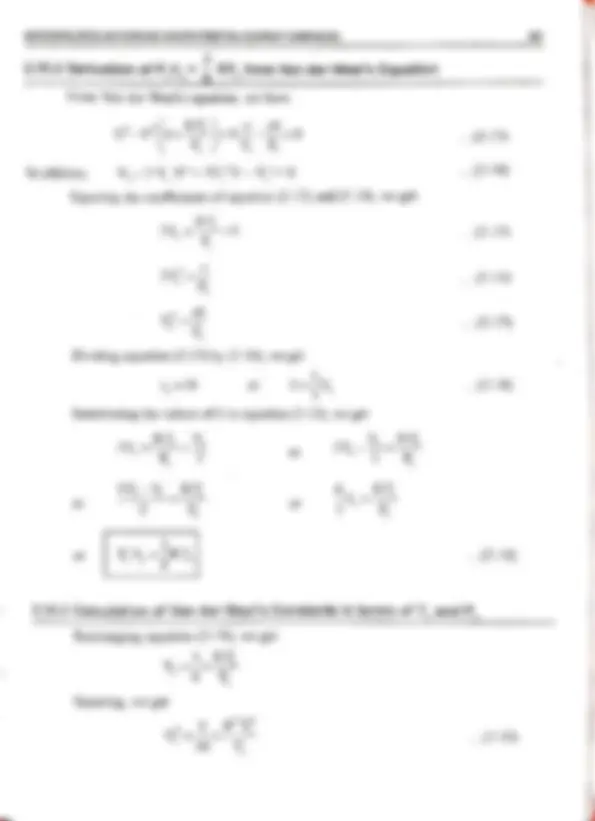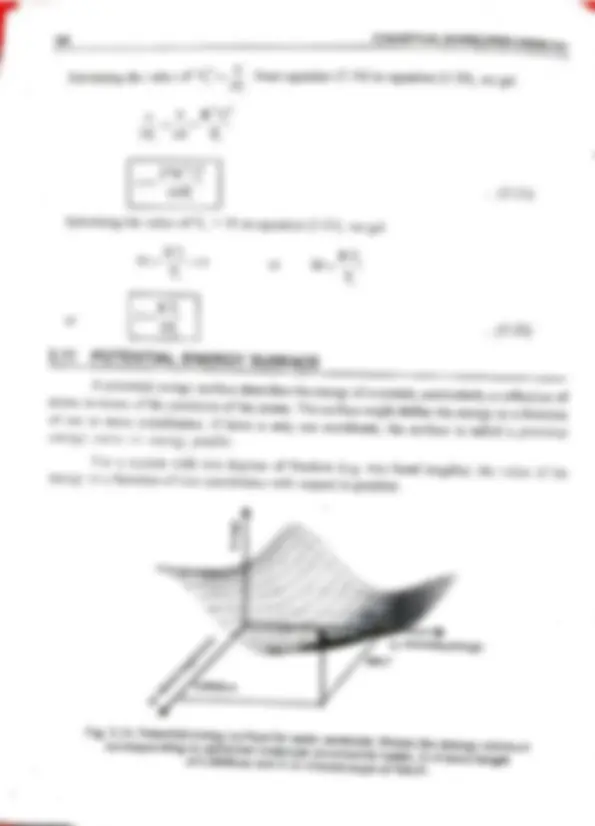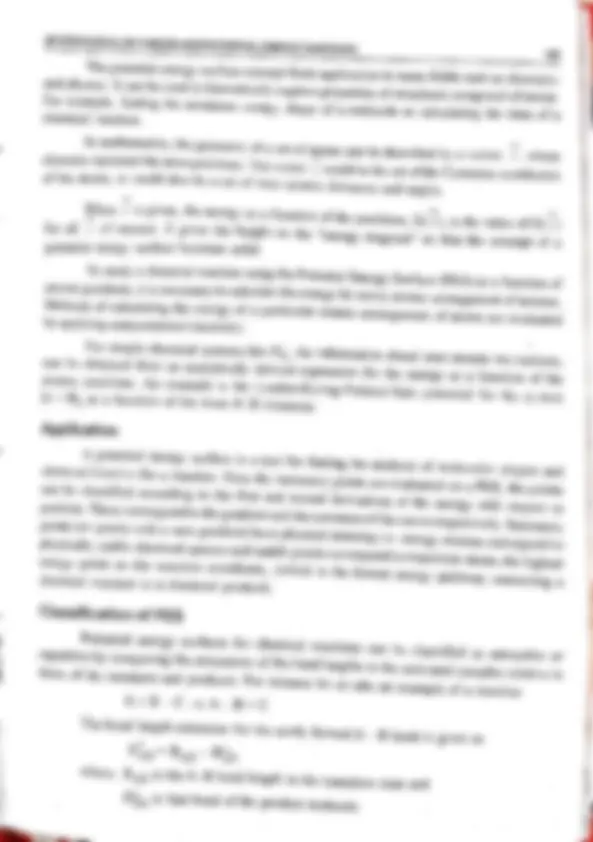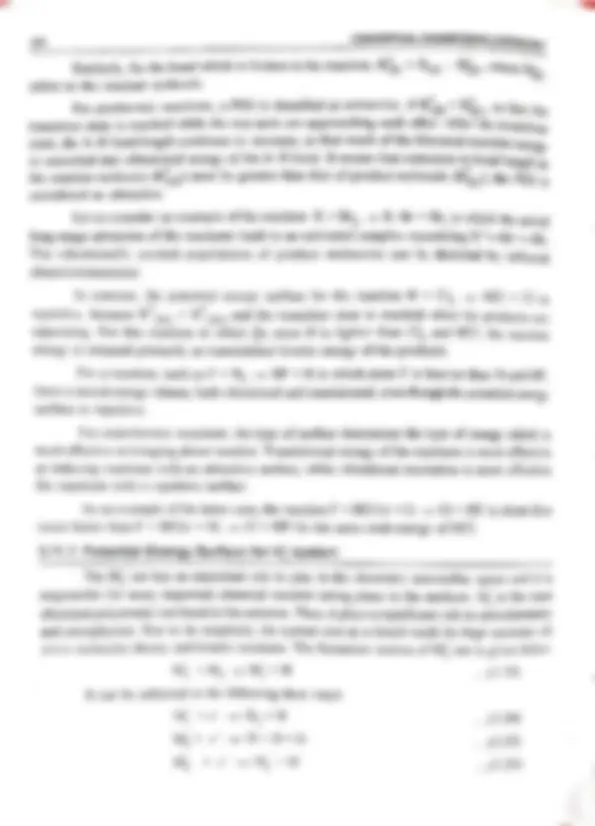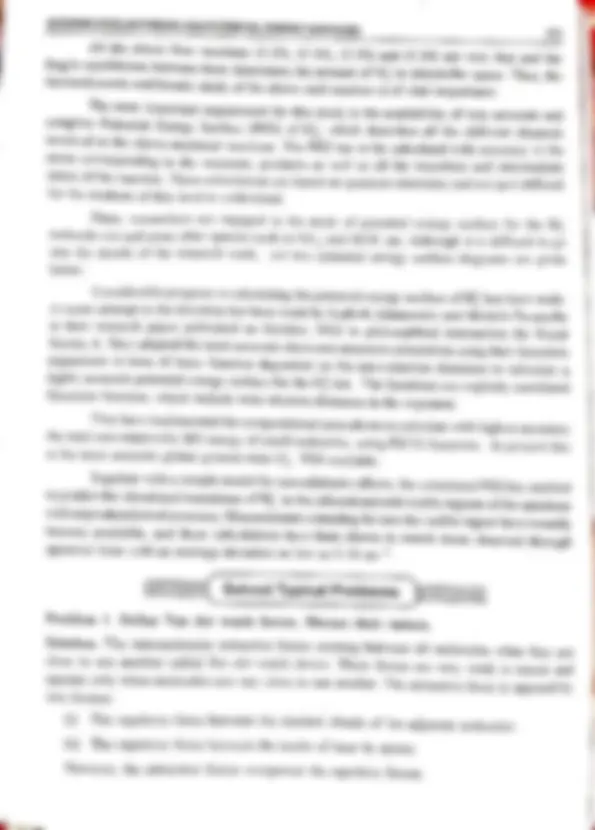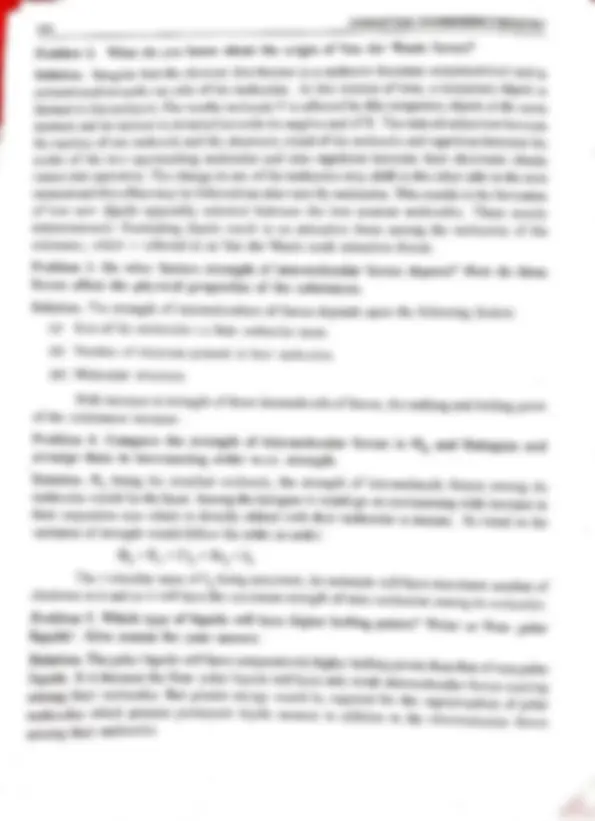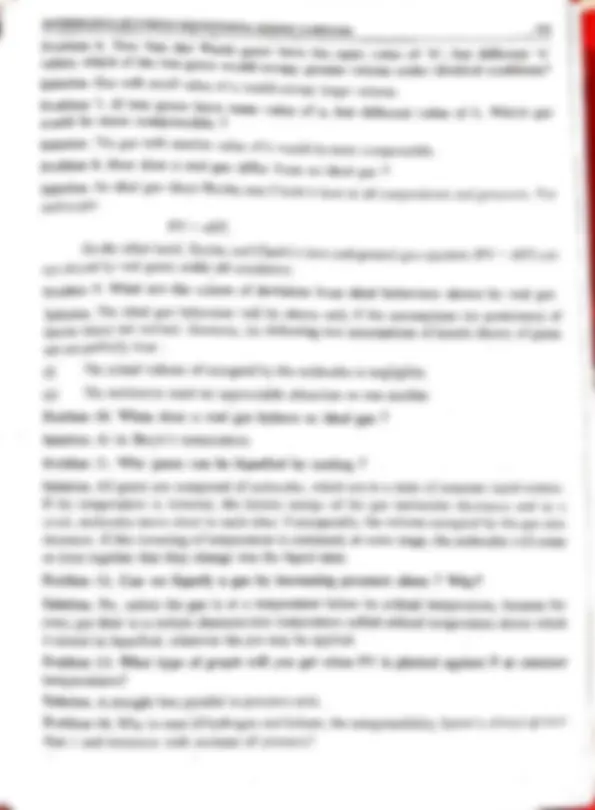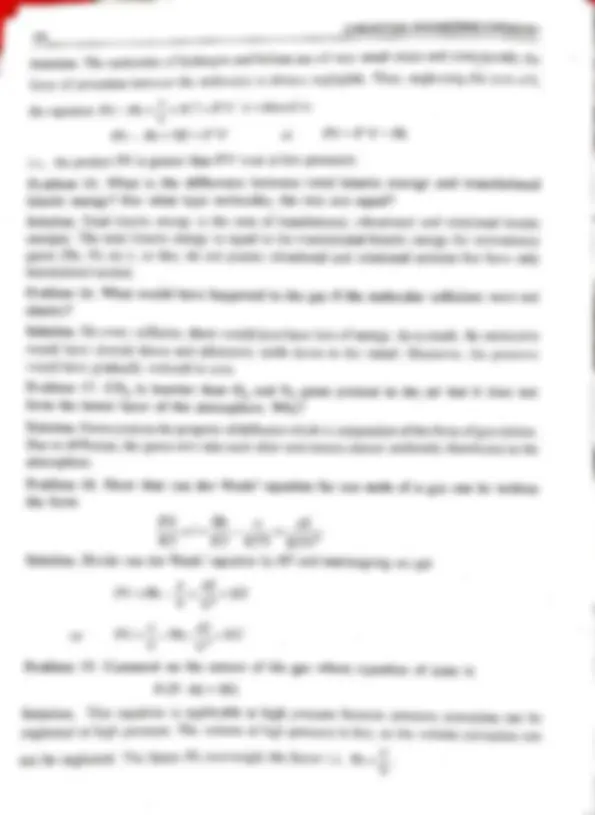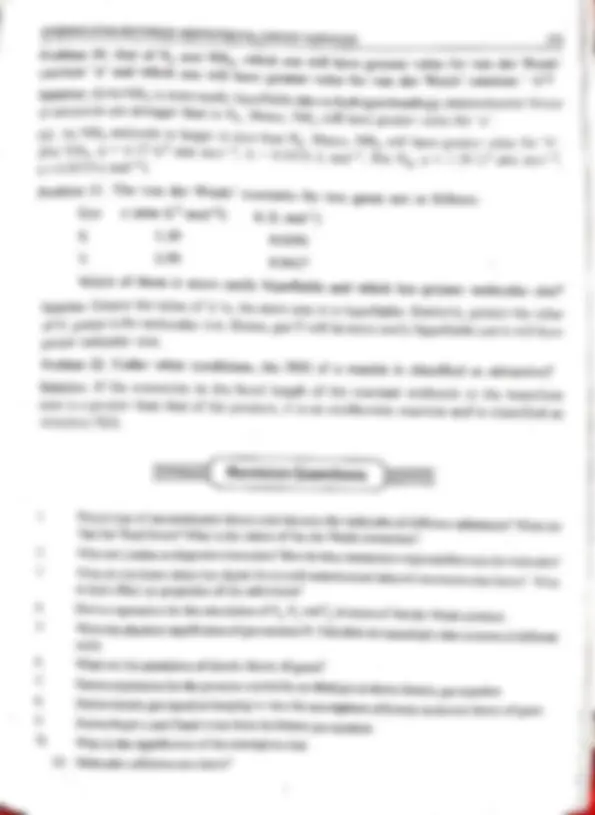Partial preview of the text
Download important notes of chemistry and more Lecture notes Chemistry in PDF only on Docsity!
INTERMOLECULAR FORCES AND POTENTIAL ENERGY SURFACES SYLLABUS (4 Lecturers) Tonic, dipolar and van Der Waals interactions. Equations of state of real gases and critical Phenomena. Potential energy surfaces of H 3, HF and HCN and trajectories on these surfaces. 3.1. INTRODUCTION The t between the molécules of the substances are called intermolecular) "forces These forces are present in all kinds of molecules. These weak attractive forces are present for all the states of matter and determine their structural and physical properties. These forces are present in even{ion-polar substances! such as) H5, Cly;"CHY etc.. since all these substances can be liquified. Even the inert gases such as He, Ne. Ar. etc possess intermolecular force because they can also be liquified. and some weak forces must be o molecules. perative among the The existence of these forces among the non-polar molecules in their liquid and solid states was first proposed by the Dutch scientist J.D Van der Waals. Interaction between various molecules leads to intra-molecular forces, which affect the physical as well as chemical Properties of the compounds. Along with intermolecular forces, we shall take up the study of potential energy surfaces in this chapter. 3.2 TYPES OF INTERACTION FORCES It is completely established that forces of attraction exist between polar as well as non- Polar molecules. These intermolecular forces called Cohesive forces or Van der Waals forces originate from two types of interactions. namely (i) Dipole ~ Dipole Interactions and (ii) Induced Dipole - Induced Dipole Interactions. (147) 
